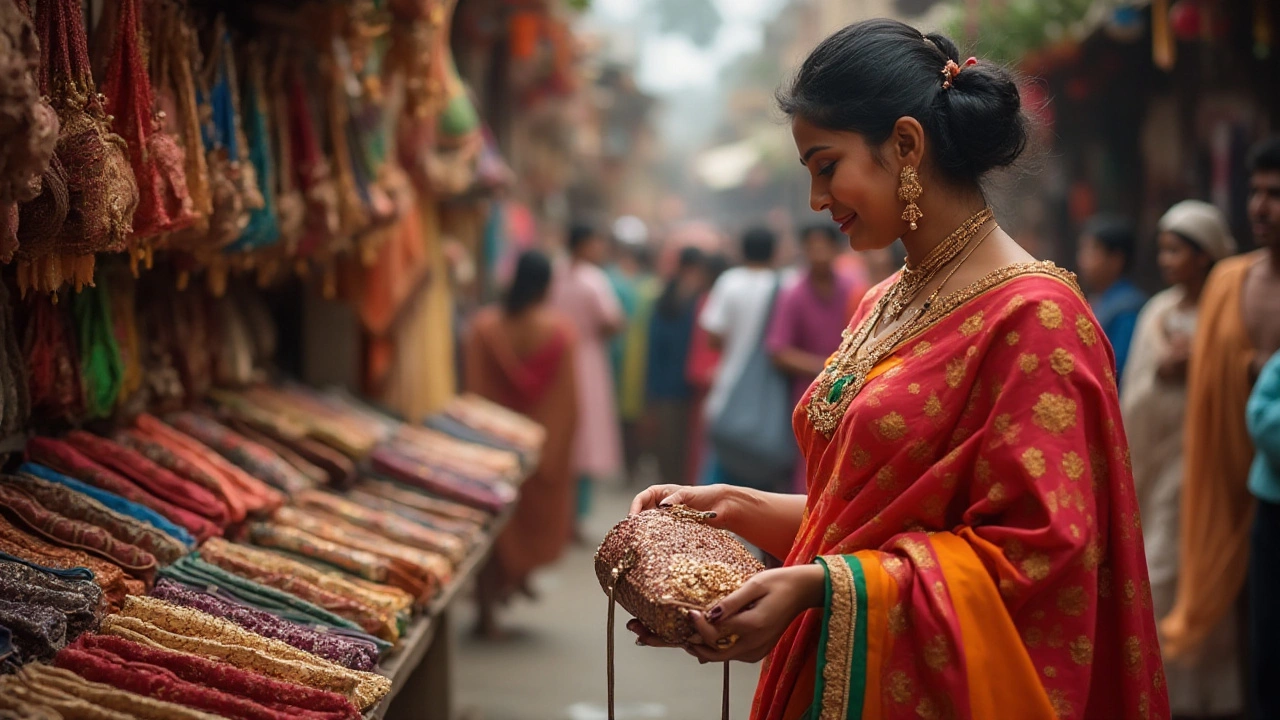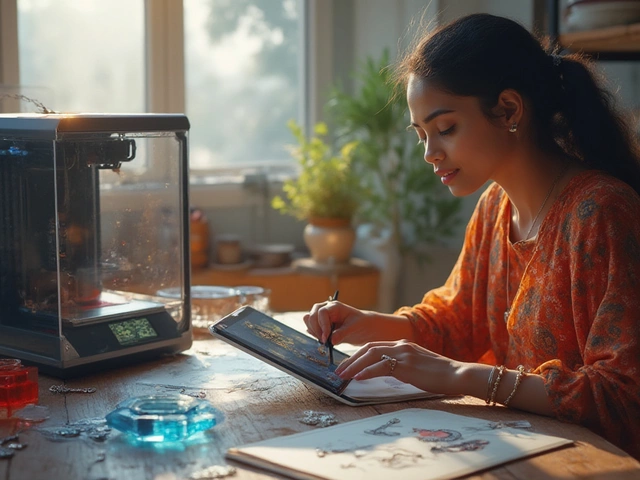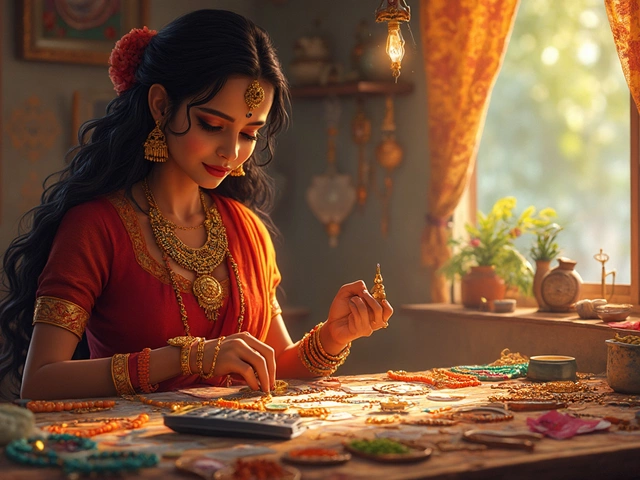In the vibrant tapestry of Indian fashion, purses hold a unique and dynamic place. These accessories have gracefully transcended their utilitarian origin, evolving into symbols of personal style and cultural heritage.
More than mere appendages to an outfit, purses in India speak volumes about the wearer’s taste, preferences, and even traditions. Let's embark on a journey through time and trends to unravel the intricacies of how these cherished items have become indispensable accessories in wardrobes across the nation.
- The Historical Significance
- Varieties and Styles
- Cultural Impact
- Favorite Materials and Textures
- Styling Tips for Everyday Wear
- Experimenting with Fusion Fashion
The Historical Significance
Delving into the history of purses and their role in Indian fashion, we uncover stories of both practicality and elegance. These accessories, known for their ability to carry essentials, have been part of human attire for centuries. In ancient India, both men and women used various forms of bags, often seen in traditional art and temple carvings. The existence of bags in these artworks is a testament to their integral role in daily life and social status.
The concept of a purse, or 'batua' as traditionally known in many parts of India, was not merely about utility. In the royal courts of the Mughal era, purses adorned with intricate embroidery and precious stones were worn as a sign of wealth and fashion sensibility. These beautifully crafted fashion accessories were often made from luxurious materials such as silk and velvet, and their designs offered insights into the artisan skills of the period.
In the early 20th century, the influence of Western fashion began to seep into Indian society, introducing different styles and forms of handbags. It was during this time that the modern handbag started to gain popularity, gradually replacing traditional styles. Despite this change, the symbolic significance of purses endured. These handbags became a medium of cultural exchange, blending the elegance of Indian craftsmanship with contemporary designs.
According to Dr. Arti Sandhu, a noted scholar on Indian fashion, "The evolution of purses in India is not just about the adoption of styles but about how these accessories narrate stories of cultural identity and transformation."
Even today, the historical roots of purses in India can be seen in the popularity of designs that draw inspiration from ancient motifs and techniques. As we acknowledge their journey from functional items to fashion accessories, it is clear that purses have always been more than just bags. They reflect the diverse tapestry of Indian traditions and the constant evolution of style preferences across generations.
Varieties and Styles
In the world of Indian fashion, the array of purses available is as diverse as the country itself. From classic clutches to contemporary sling bags, each style brings a distinct flavor and utility to one's attire. The traditional clutch, often embellished with intricate patterns and embroidery, is a staple for festive occasions and weddings. These are usually crafted with rich textiles like silk or brocade, offering both aesthetic appeal and utility. On the other hand, the modern crossbody or sling bag is an urban delight, perfect for everyday errands or casual outings. With practicality at its forefront, these bags often feature multiple compartments, becoming quite the necessity for the multitasking urbanite.
The blend of traditional and contemporary styles is perhaps most vividly seen in the tote, a style that seamlessly bridges the gap between practicality and fashion. Totes are abundantly seen in marketplaces, sometimes crafted from eco-friendly materials like jute or cotton, reflecting India's growing awareness and commitment to sustainable fashion. For those who prefer something smaller yet spacious, bucket bags have become quite the trend, known for their unique shape and versatility. The variety continues with handbags, which can be found adorned with everything from intricate beadwork to mirror embellishments, each telling a story of India's rich artisanal heritage.
Style doesn't just stop at fabric and form; it extends to an artistic expression, where colors and motifs play a leading role. Indian handbags often showcase traditional motifs like paisleys, peacocks, and floral patterns, embodying the cultural tapestry of the nation. According to a study published in the Fashion Journal of India, there's been a 30% increase in demand for bags featuring indigenous Art Deco designs in the past year.
“Purses are more than just carriers; they are statements,” noted Shalini Nayar, a renowned fashion designer known for her work in sustainable fashion. “In India, a purse does not merely complement an outfit; it completes it.”
Let's dive into the materials that shape these styles. Leather remains a beloved choice for its durability and classic appeal, while cruelty-free alternatives like faux leather and canvas have gained substantial popularity among conscious consumers. Besides, British-influenced satchels and backpacks have also carved a niche for themselves, particularly among college students and young professionals seeking style with substance. Each style, with its unique twist, supports different facets of Indian life, reflecting the vibrant diversity of the culture.
A glance at the fashion market in India shows a rich tapestry woven with varied textures and styles, promising a burst of creativity and functionality. It’s fascinating how deeply fashion accessories are embedded in the everyday lifestyle of people, with each purse narrating a unique persona of its own, marking a beautiful blend of both historical essence and modern trends in Indian fashion society.
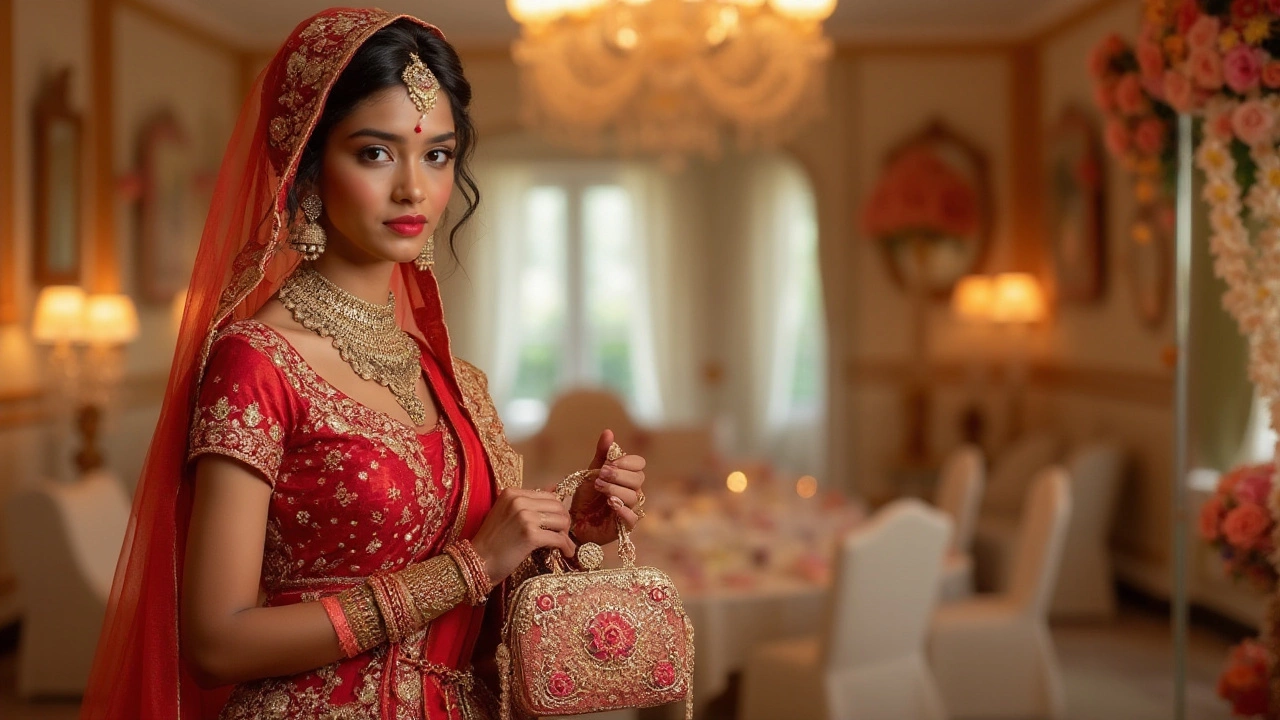
Cultural Impact
The rich and diverse culture of India is deeply embedded in its fashion, and purses play a significant role in enhancing this cultural tapestry. These fashion accessories are more than just mere vessels for carrying essentials; they are intricate threads that weave stories of heritage, tradition, and expression. Indian women have historically used a variety of purses, from ornate clutches in weddings to vibrant totes during festivals, each serving as a canvas reflecting cultural identity. In many regions, traditional embroidery such as zardozi, mirror work, or kantha crafts are celebrated through the intricate designs that decorate purses. Such craftsmanship not only highlights the artistic excellence native to the country but also allows individuals to showcase regional pride.
The significance of handbags and purses also extends to societal gatherings and ceremonies, where they often symbolize status and social stature. At weddings, for instance, a heavily embroidered clutch can signify the opulence and rejoice of the celebration. When urbanization began influencing Indian lifestyles, a fusion emerged where traditional aesthetics were blended with modern convenience, leading to trendy adaptations like sling bags and crossbody bags that carry a blend of contemporary utility with traditional allure. These blends have often been seen as a part of expressive cultural dialogues, uniting diverse elements into a singular, personal style statement.
Interestingly, purses have also been part of political and social movements. The design and choice often serve as a medium for individual expression or a silent revolt against societal norms. In a country as diverse as India, every accessory, including the purse, is seen as a potential platform for storytelling, reinforcing the notion that fashion is a visual language that communicates cultural depth. It’s remarkable how even our choices of mundane items can hold substantial cultural weight and reflect broader social dynamics. Thus, the cultural impact of purses stretches far beyond the realms of aesthetics and functionality. They are interfaces of personal narratives, cultural reflections, and are continuing marks of evolving styles that resonate with modern needs while keeping historical essence intact.”
"Fashion is instant language." – Miuccia Prada
Statistics indicate that the Indian handbag market is projected to grow significantly, as women view fashion accessories not just as functional items but as vital extensions of their personality. This growth affirms the profound cultural and individual value these accessories hold, suggesting that purses are not just carriers of belongings but of history, culture, and identity.
Favorite Materials and Textures
In the world of fashion, especially when it comes to purses, the materials and textures used are not just about aesthetics but also tell stories of craftsmanship, tradition, and innovation. In India, this sentiment resonates deeply as artisans skillfully weave their heritage into each piece. One cannot discuss Indian purses without mentioning silk, a fabric that has been cherished for centuries. It’s not only about its lustrous sheen but also the cultural weight it carries. Silk in purses is often enhanced with intricate embroidery, an age-old tradition passed down through generations, making each piece unique.
Among other popular choices is leather, known for its durability and versatility. Leather purses in India often reflect a combination of Western styles with indigenous touches, offering a blend that appeals to both traditionalists and modernists. Jute, an eco-friendly option, has gained prominence due to increasing environmental awareness. This natural fiber not only provides a rustic texture but supports sustainable fashion. A notable mention in recent times is the rise of vegan leather, catering to ethical fashion enthusiasts. According to the Indian Fashion Chambers,
“The shift towards sustainable materials in accessories has been a significant trend, attracting a new generation of conscious consumers.”
Texture plays a pivotal role in a purse’s appeal. From the smooth finish of polished leather to the gritty feel of jute, textures contribute to the sensory elements of Indian fashion. The use of beadwork and sequins further adds dimension, creating a visual spectacle. Hand-painted designs on canvas or fabric, derived from traditional art forms like Madhubani or Warli, lend authenticity and exclusivity to purses. These textures and materials aren't merely for visual pleasure; they also infuse character and personality into the accessory.
When choosing a purse, Indian fashion enthusiasts often consider the material’s alignment with their personal beliefs and lifestyle. While practicality is key, the emotional connection cannot be overlooked. A silk purse might remind someone of their grandmother’s sari, while a leather one could evoke memories of urban adventures. The tactile experience of each fabric, whether it’s the cool surface of polished metal clasps or the soft caress of velvet linings, adds to the purse’s narrative. This is why the material choice isn't just a decision of utility, but an expression of one’s identity and values.
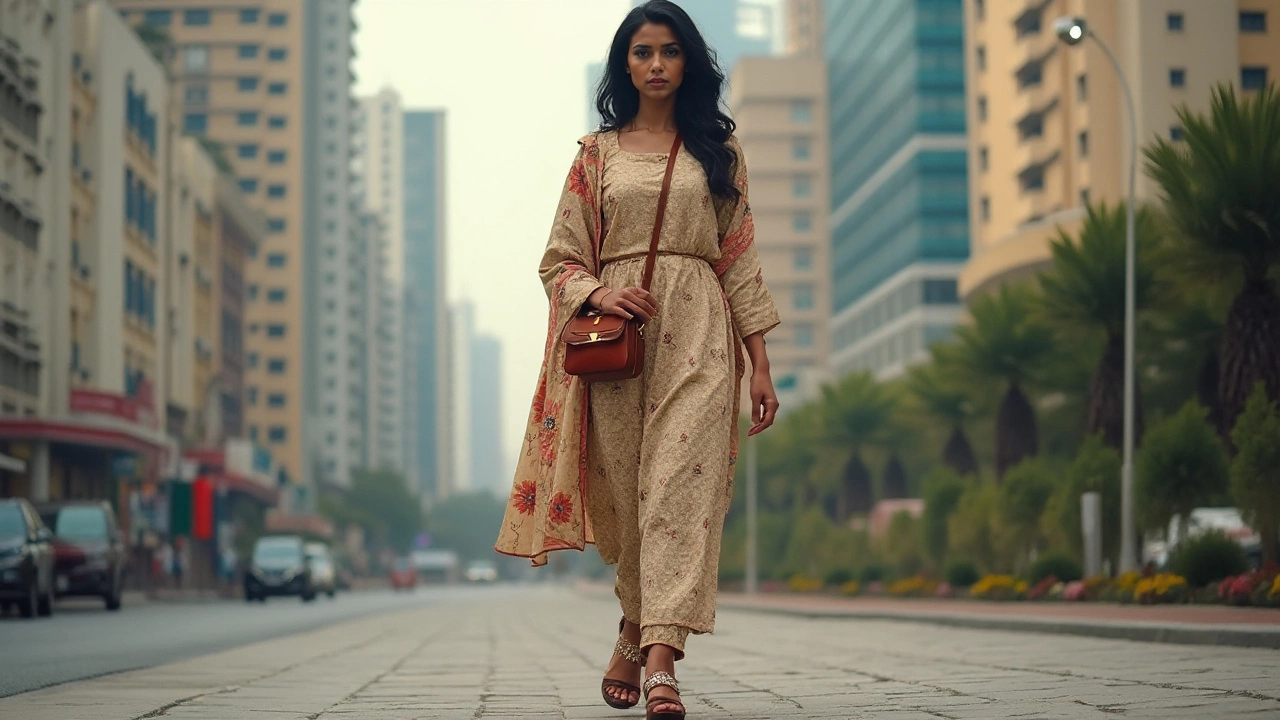
Styling Tips for Everyday Wear
Integrating a purse, especially for everyday wear, goes beyond just grabbing a bag and hitting the road. It's a thoughtful process, one that involves harmonizing your attire with an accessory that complements, contrasts, or adds a dash of panache to your ensemble. Whether you're heading to college, work, or a casual meetup, selecting the right purses or handbags forms a core part of your fashion decisions. Begin by assessing the color palette of your wardrobe; neutral tones such as black, beige, and white often effortlessly blend with a wide range of outfits. Yet, don’t hesitate to play around with bold hues if that aligns with your personal expression. For instance, a vibrant red handbag can act as a focal point if your attire primarily consists of muted tones.
Now, let's delve into functionality. The size of your purse should be proportionate to its purpose. For daily use, consider opting for mid-sized options that provide ample space without being cumbersome. Crossbody bags have surged in popularity due to their blend of practicality and style. They not only keep essentials like wallets, phones, and keys within easy reach but also free up your hands, increasing your comfort and mobility during daily commutes or errands. A crossbody bag can also easily transition from day to evening, proving its versatility.
Another aspect of styling with purses is the material. Leather purses or those made with traditional handcrafted textiles enjoy great cultural importance in India. They introduce texture into your outfit, contributing to a rich and layered appearance. Blending modern fashion with traditional elements creates a striking aesthetic that resonates with contemporary Indian style. According to fashion expert Ritu Kumar, "It’s not just about following trends; it is about making the trend yours by adding personal and cultural value."
Such insights reflect broader trends in the fashion world, where individual expression is paramount and accessories like purses play key roles.
One more thing to keep in mind is avoiding over-accessorizing. Your purse and jewelry should coexist without one overshadowing the other. If your purse features intricate designs or embellishments, pair it with minimalistic, subtle jewelry to let both accessories shine. Conversely, if your outfit calls for bolder jewelry, select a simple handbag to balance the overall look. This harmony creates a cohesive ensemble that reflects sophistication and thoughtful curation. By following these styling tips, not only can you make daily fashion choices easier, but you can also ensure you're stepping out in style every day, expressing yourself through the universal language of fashion.
Experimenting with Fusion Fashion
Fusion fashion is an exciting concept that beautifully merges traditional design with contemporary aesthetic, a trend that is vividly alive in India's vibrant fashion scene. The idea is to take the freshness of modern cuts and fabrications and intertwine them with the deep cultural roots found in Indian attire. This is where purses play a transformative role. When adorned with intricate Indian motifs such as paisleys, peacocks, and floral patterns, a contemporary purse can instantly elevate a garment to something that speaks to the heritage of India while maintaining a fresh, global outlook.
Consider the marriage of a sassy leather clutch with hand-embroidered embellishments or a classic tote with Rajasthani block prints. These purses not only provide a striking contrast to plain Western outfits such as jeans and a t-shirt but can also complement ethnic wear like a saree or lehenga, adding a touch of quirkiness. This interplay is about expressing identity and celebrating both the old and new worlds. An iconic example was seen during the Lakme Fashion Week last year, where designers showcased models carrying bags with a mix of recycled materials and traditional embroidery, opening up discussions about sustainability and style.
One particular trend that has been gathering momentum is the use of vibrant Kalamkari and Banarasi prints on contemporary bag shapes like backpacks and sling bags. These pieces not only serve as trendsetting accessories but also help propagate the rich Indian textile story to a broader audience. “Combining traditional Indian influences with Western fashion is like telling a story through your attire,” quoted Anamika Khanna, a celebrated fashion designer known for her work in fusion fashion.
"The accessories you choose say a lot about your personality, and with the right purse, you can bring a part of your culture with you wherever you go,"she notes.
Many young Indians are now exploring the global cityscapes with these fusion accessories, making a bold statement of their unique identity. The growing popularity of handmade bags from local artisans supports small businesses while simultaneously breathing new life into ancient crafts. For the fashion-forward individuals, this trend is not merely about the aesthetic—it’s a conscious statement. The involvement of local artists through fusion fashion has been statistically significant, with a 25% increase in exports of Indian handcrafted bags over the past year, showcasing their global appeal and cultural importance.
Participating in the fusion fashion revolution requires a combination of curiosity and creativity. For those new to this style, start by pairing a simple kurta with a fashionable purse that boasts distinctive Indian prints. Experiment with contrasting colors to bring out the vibrancy in your ensemble. It’s all about finding the right balance between comfort and creativity, ensuring that your outfit tells a story of its own. The irresistible charm of fusion fashion lies in its endless possibilities, making every outfit a canvas and each accessory an expression.
